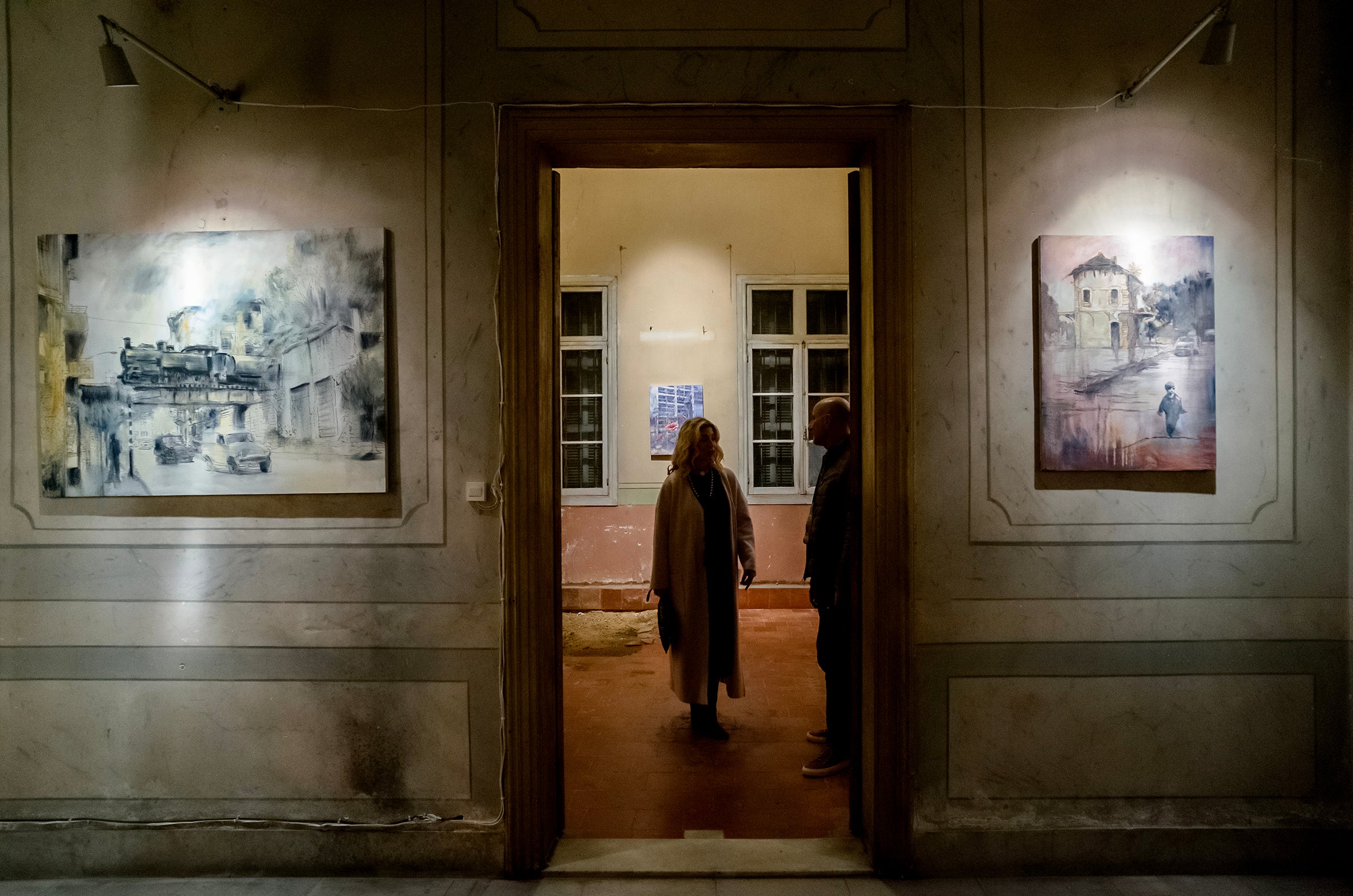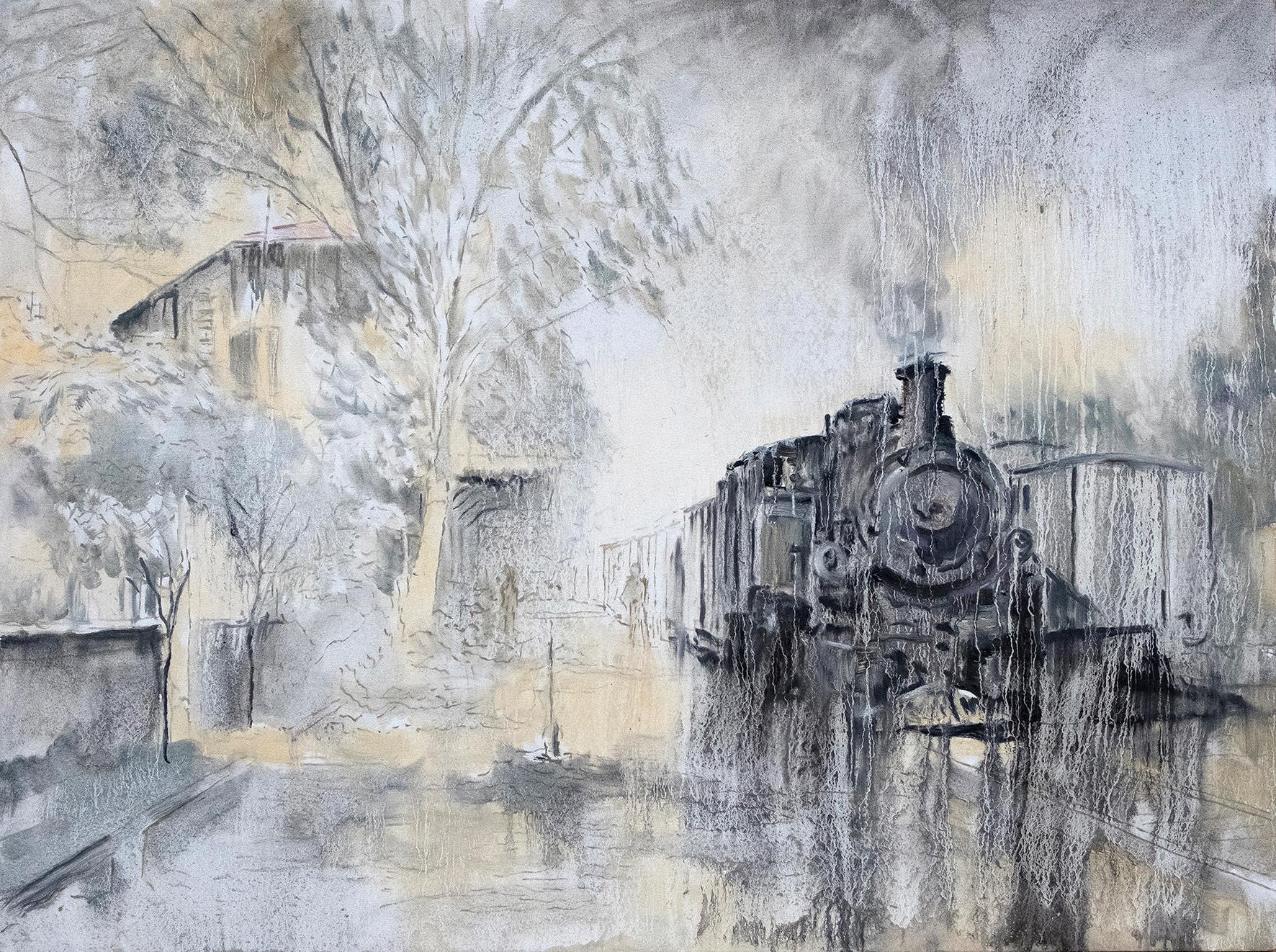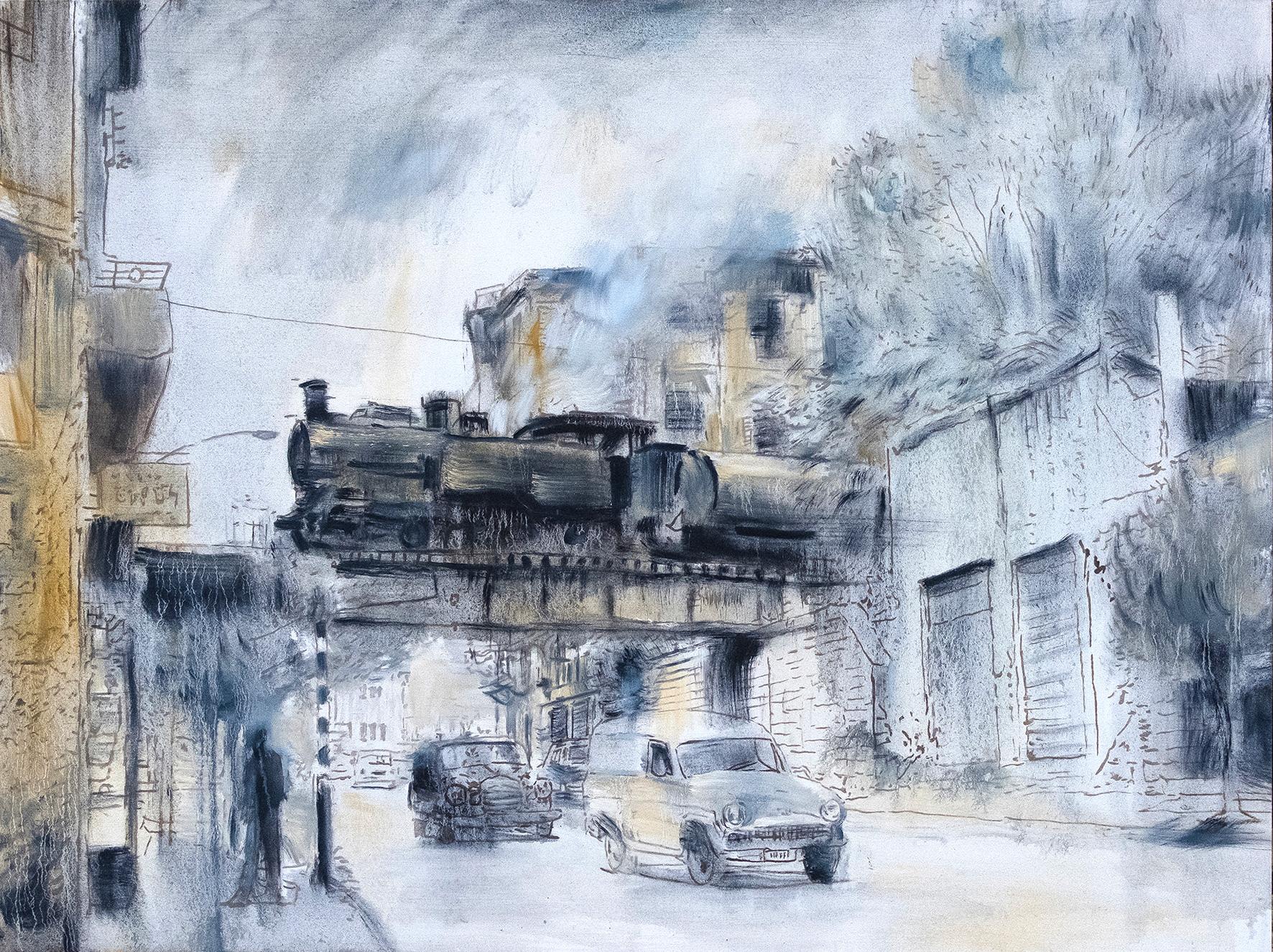The Boustani house encompasses both the tragedy and faith of Lebanon
Boustani owned a magnificent house only 400m from the Mar Mikhael station. His residence, his kindness and the memory of those trains is being honoured this month with paintings by the British artist Tom Young


During the great famine in Lebanon and Syria – whose lamentable 100th anniversary we mark these current months, though few bother to commemorate (or even remember) it – the hungry and poor of Beirut would gather at Mar Mikhael railway station in the east of the city, in the desperate hope that the once-a-week steam locos coming down from the mountains would have vegetables, even meat, in their grimy freight wagons.
Some of these people had lived on stinging nettles, like the Irish of the 19th-century Great Famine, and many of their children and elderly had died of starvation. The bodies of children lay in the streets. So the trains were a symbol of both hope and despair.
But just up the road lived a Lebanese banker, Salim Habib al-Boustani, who would regularly walk down to the station to hand out food and cooking oil, and money to the dying proletariat of Beirut. They indeed deserved a revolution.
Since 1914, the Allies had blockaded the Ottoman coastline, preventing all supplies reaching the ports of Lebanon and Syria – which were then part of the same Ottoman province.
As the Great War strangled the Ottoman armies, their Turkish officers commandeered massive shipments of food, farm animals and carts from the hundreds of thousands of destitute Lebanese and Syrians living in countryside, mountains and cities.
Amid this misery, some of the Beirut rich (for this was, after all, Lebanon) held parties – and invited their Turkish rulers – but there were others like Boustani who retained their morality and cared for their gaunt-faced neighbours.
Boustani owned a magnificent house only 400m from the station, and his residence and his kindness and the memory of those trains is being commemorated this month, with paintings by the British artist Tom Young and even film footage of the first steam railway to be built by the Allies in the Second World War.
It’s all inside the old Boustani house, now under restoration: a glorious Ottoman pile with arched windows whose owners, Nabil and Zoe Debs, are also turning it into the second Beirut Arts Club.

In 1917, Beirutis had only just recovered from the earlier “year of the locust”, when billions of the insects swept across Egypt and the Levant consuming everything in their flight path. The locust cloud over the Lebanon was so thick that diaries of the time describe it eclipsing the sun.
In the Beqaa valley east of Beirut, a historian described how they settled on the ground “to the depth of an arm’s length”. Perhaps two million died of hunger in the Great War, especially in Beirut, and this was in addition to the one and a half million Armenian Christians “genocided” by the Turks in 1915, whose survivors were now turning up in Beirut to add to the city’s starving population.
Thus the lands of the Levant today lie on the unknown graves of as many as three and half million dead: well over three times the total fatalities of the British and its Empire during the First World War.
Young has a fascination with trains, and so do I; writer’s admission, two of his railway paintings hang in my Beirut home, one of the upended track high above Beirut where the civil war ended its purpose, and another of a 19th-century Swiss rack-and-pinion loco rotting in the old Beirut marshalling yard, smothered in flowers and creepers.
His paintings in the Boustani house, however, evoke a living railway. A steam loco thunders over the Mar Mikhael railway bridge in 1972 – still there today, but overgrown – while in another, an old Ottoman train waits in a station further up the mountain.
Young takes his inspiration from original photographs, and I know well the picture of the steamer on the bridge. But in Young’s hands the train is bursting over the bridge: a grey speed emanating from it, smoke billowing upwards, as if you could pop out the door, run down the street and see the real thing thundering past.
As always, Young’s interest curls round the decay and the might-have-been. He’s climbed up onto the track and found Mar Mikhael station in ruins – it has simply fallen down – and the remains of an old carriage. In paint, he has transformed it into a kind old graveyard. “La wayn”, it is captioned in Arabic. “To where?”
He has, of course, photos of the real wreckage which he took from the railway line. During the Second World War, British officers were billeted on the top two floors of the Boustani house after the victory they and the Free French had gained over the Vichy forces loyal to Petain in 1941.
It was the British and Australians who extended Lebanon’s railway network to the northern city of Tripoli, principally to carry ammunition, and there’s a weird moment when, looking at Young’s pictures, film footage appears on the ceiling above.

And there are the Australian soldiers with British General Spears – who loved De Gaulle and then hated him so much when he refused to grant Lebanon its promised independence that Churchill fired him – and Lebanese President Naccache, France’s pliant Lebanese “leader”.
But the camera also sits above the footplate of a big steam loco, and we travel with it on the movie as it thunders up the Lebanese coast – you can still recognise the surviving railway bridges today – to the cheers of crowds of Lebanese civilians. The film is freely available from the Australian government.
In one shot, it’s clear the railway-builders half-demolished a beautiful Ottoman house to allow the track to take a curve above the Mediterranean.
So a shake of the head from Young each time he sees this sequence. He spends much of his time trying to preserve the cultural past of Beirut – not without ruffling masses of sectarian feathers – and declined to involve himself with the Boustani house when its previous owners announced their decision to bash it down and build a road through the site to two new tower blocks.
But the moment the Debs bought the house, Young was back to support their restoration. The ground floor window casing appears almost identical to that of the original Mar Mikhael railway station, built a few years later; the same Italian architect may well have constructed both.
More than a hundred years ago, Salim and Adele Boustani had six children, one of them a daughter called Georgette. After arriving with the Allied forces in 1941, a Scottish officer, the gloriously named Frank Armour, fell in love with Georgette and married her.
He was looking after his songbirds in the back garden of the house during the Lebanese civil war when a shell burst next to them. Most of them died. Frank was in the house and survived.
Somehow, the Boustani house, like the old railway station down the road, appears to encompass both the tragedy and faith of Lebanon. So surely it has now been saved.
